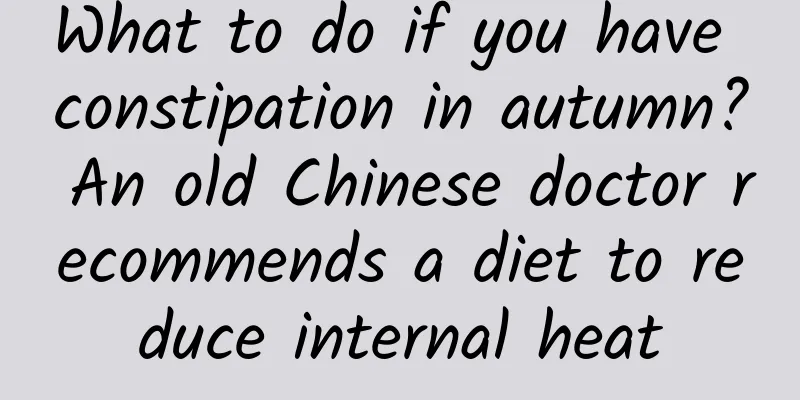The reason why women have dull pain in their lower abdomen from time to time

|
For women, if there is a dull pain in the lower abdomen, you should pay attention to it. There are many reasons causing it, both physiological and disease-related. For example, during ovulation, some women will experience abdominal pain, which is normal and does not require treatment. If you are already pregnant and always experience this pain, you should be alert to ectopic pregnancy. In addition, dysmenorrhea can easily cause such symptoms. The reason why women have dull pain in their lower abdomen from time to time There are many reasons why women often experience dull pain in the lower abdomen. Most of them are caused by gynecological diseases. So if you experience dull pain in the lower abdomen, don't think it is a normal physiological reaction. You must find out the real reason. 1. Ovulation abdominal pain This dull pain is a physiological pain, because when males reach puberty they will ovulate, and of course the egg cells will rupture. Once ruptured, it will have a certain impact on the abdomen, causing a dull pain. This is physiological, and the symptoms are mostly unilateral lower abdominal pain, dull pain or heaviness-like pain. Some girls also have a small amount of bleeding, that is, ovulation bleeding, which usually disappears on its own after one or two days and usually does not exceed seven days. This type of abdominal pain usually does not cause any pathological changes, and the gynecological examination is completely normal. It is physiological abdominal pain and generally does not require treatment. 2. Ectopic pregnancy Ectopic pregnancy refers to the implantation of the gestational sac outside the uterus. Among ectopic pregnancies, about 95% occur in the fallopian tube. Abnormal fallopian tube development, abnormal fallopian tube function, tumor compression, and downward migration of the intrauterine contraceptive device may all cause ectopic pregnancy. Dull pain in the lower abdomen is one of the common symptoms of ectopic pregnancy. In addition to dull pain in the lower abdomen, if it is an ectopic pregnancy, there will be some other symptoms, such as cessation of menstruation and occasional bleeding, so you must pay attention. 3. Dysmenorrhea Dysmenorrhea is divided into primary dysmenorrhea and secondary dysmenorrhea. Primary pain is often seen in adolescent girls. It is related to the level of prostaglandins in the body, cold, and emotional and psychological factors, but there is no organic disease. It can generally heal itself with increasing age or after marriage and childbirth. Common causes of secondary pain are endometriosis and adenomyosis. The symptoms include gradually increasing pain, often in a cyclical manner, or dull pain in the lower abdomen during non-menstrual periods that worsens before and after menstruation. In addition, it is often accompanied by infertility and menstrual disorders, which often require drug treatment. 4. Rupture of the ovarian corpus luteum. This is caused by excessive bleeding in the corpus luteum, accompanied by sudden onset of abdominal pain in the lower abdomen or one side, and in severe cases, shock may occur. Ovarian corpus luteum rupture usually occurs between the 20th and 26th days of the menstrual cycle, and lower abdominal pain may occur at the time of the disease, with varying degrees of severity. Before the corpus luteum of the ovary ruptures, there is a process of ovarian congestion and swelling. When the ovary is affected by external or indirect external forces, especially the congestion before menstruation, it can be induced by forceful defecation, trauma, and strenuous activities. It is best to go to the hospital for treatment immediately after the occurrence of ovarian corpus luteum rupture. Do not abuse painkillers on your own to avoid masking symptoms and affecting normal diagnosis and treatment.5. Ovarian cyst pedicle torsion or rupture. This is because the pedicle of the cyst is long and large, has no adhesions to the surrounding area, and is highly mobile. It twists when affected by intestinal peristalsis or changes in body position. When the pedicle of an ovarian tumor is twisted, pain suddenly occurs on one side of the lower abdomen, which is continuous colic, often accompanied by nausea and vomiting; there may be obvious tenderness and muscle confusion in the abdomen; digital rectal examination may reveal swollen and tender appendages. Ovarian cysts may also rupture, and the contents of the cysts may irritate the peritoneum and cause severe pain. B-ultrasound examination can confirm the diagnosis. Emergency surgery is usually required. 6. Diseases related to pregnancy In recent years, cases of teenage pregnancy are not uncommon. Abdominal pain caused by pregnancy-related diseases can be seen in threatened abortion, ectopic pregnancy, etc. Taking ectopic pregnancy as an example, dull pain or distension in the adnexal area on the affected side may occur. When the ectopic pregnancy occurs miscarriage or ruptures, it can cause intra-abdominal bleeding. The pain symptoms vary depending on the amount and speed of bleeding. If it is a tubal pregnancy miscarriage, the abdominal pain is often limited to one side of the lower abdomen, and blood accumulates in the rectouterine pit, which can cause anal pain. When the tubal pregnancy ruptures, the amount of bleeding is large and the speed is fast. The blood quickly spreads to the entire abdominal cavity and causes pain in the whole abdomen. In addition, some pregnant girls have secret abortions, which can easily cause infections such as pelvic inflammatory disease or trauma to the pelvic organs and reproductive tract, and may even endanger their lives. 7. Acute appendicitis is a common lower abdominal pain in young girls. It is a surgical disease, but it needs to be differentiated from gynecological diseases. About 70% to 80% of patients initially feel pain in the upper abdomen or around the navel, which then moves to the right lower abdomen a few hours later. The pain of simple appendicitis is limited to the right lower abdomen and may be continuous or paroxysmal. The abdominal pain of suppurative appendicitis worsens, often presenting as paroxysmal severe pain or bloating. Necrotizing appendicitis begins with persistent throbbing pain, and the area of abdominal pain expands and the severity becomes more severe. In the early stages, there is often mild nausea and vomiting of food, often accompanied by loss of appetite and constipation. Abdominal distension may occur when inflammation is severe. The presence of migratory right lower abdominal pain is a characteristic of appendicitis. The disease generally requires surgical resection. 8. Psychogenic abdominal pain, such as in a young girl with school phobia, who is afraid of going to school and taking exams. If the patient is forced to go to school, she will experience anxiety and anxiety-related physical discomfort, such as pale complexion, accelerated reporting rate, rapid artificial respiration, unbearable abdominal pain, vomiting, headache and dizziness, etc. Some patients have visited the doctor for severe abdominal pain many times, but the results of various examinations are normal. |
<<: Pain under the left rib cage
>>: What to do if the area around your eyes is dry, itchy, tight, and wrinkled
Recommend
What will happen to men with short philtrums? How to judge the length of the philtrum
The shape of the philtrum can reflect people'...
What to do about body odor during adolescence
The phenomenon of body odor during adolescence tr...
What to eat in summer to clear away heat and detoxify? Recommend three health-preserving soups
Whenever summer comes, people will deliberately c...
Does proctitis cause bleeding in stool?
Observing stool is a good way to determine whethe...
What medicine should women take for yin and yang imbalance
Yin and Yang is a term used in traditional Chines...
What are the tonic Chinese medicines for replenishing lung qi?
A few days ago, a hot search pointed out that a y...
How to treat lumbar disc herniation with Chinese medicine wine
Chinese medicine wine can also achieve certain ef...
How to remove black tartar from baby's teeth
When black plaque appears on baby's teeth, it...
Symptoms of anal fistula
Anal fistula refers to a granulomatous duct forme...
How to treat pollen allergy on face
Spring is a beautiful season, with gentle breezes...
How to Remove Moles Home Tips
For some female friends who pursue perfection, th...
Early stage of internal hemorrhoids
Patients with internal hemorrhoids in the early s...
Numb lower lip?
Many people are familiar with numb lips. If you e...
How long can I use the erosion suppository after abortion?
Xiaomi suppositories are commonly used gynecologi...
Touch this part of your face often to say goodbye to spots and become a goddess
In the eyes of traditional Chinese medicine, each...









